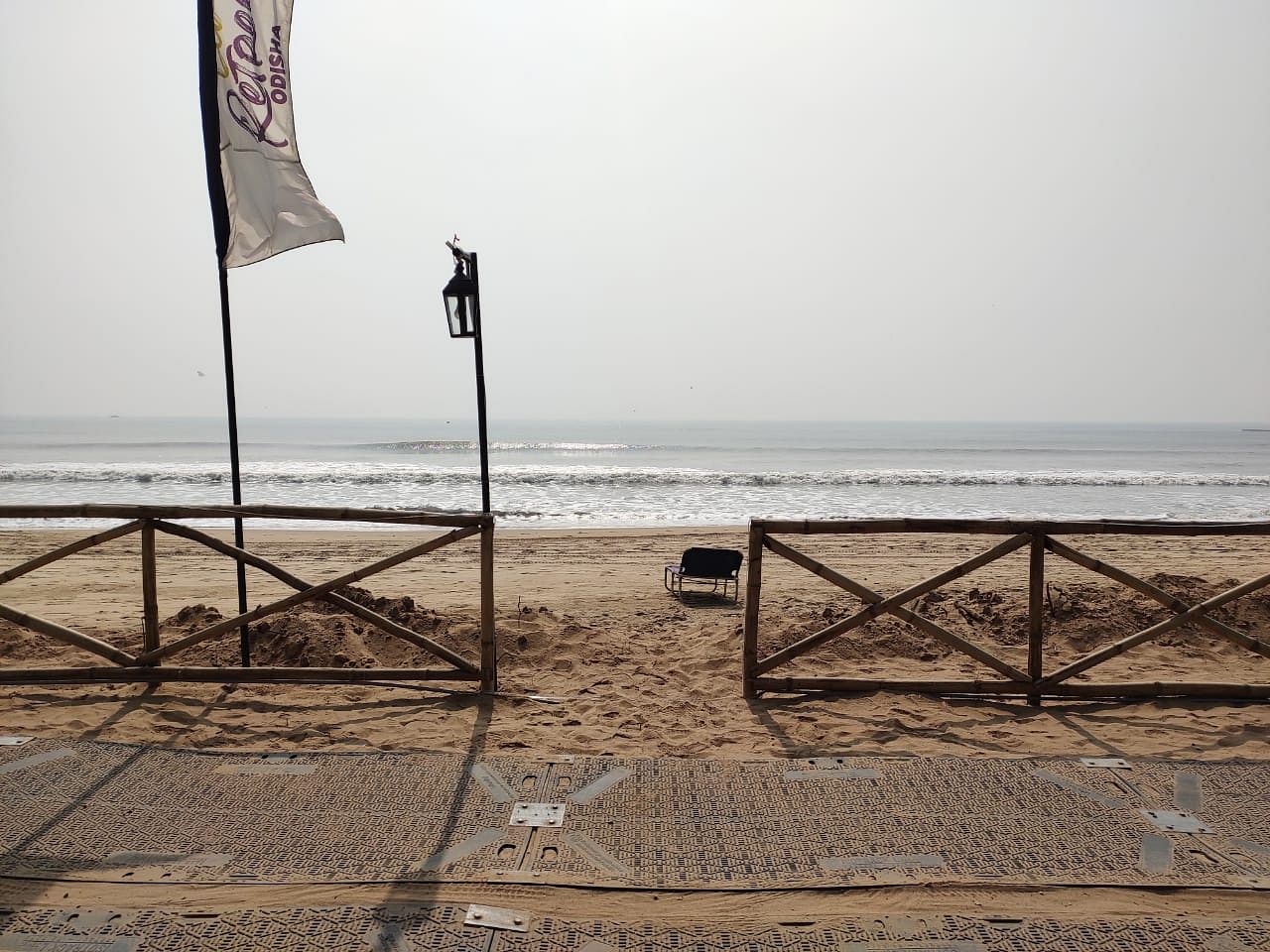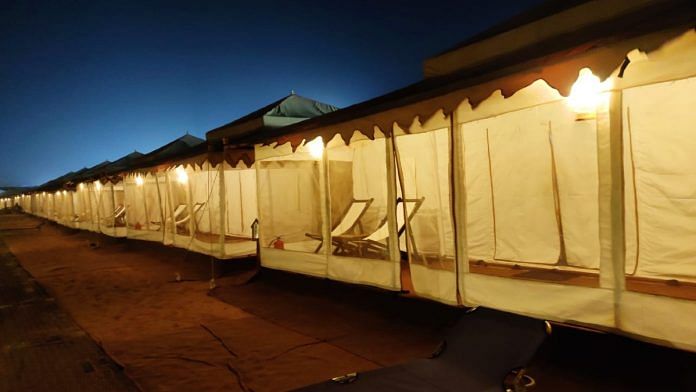Konark (Odisha): With its network of temples — from the Sun Temple in Konark, a world heritage site, to the Jagannath shrine in Puri, one of the four ‘dhams’ — Odisha has been an important destination for religious tourists from all over the country.
But the state tourism department now wants an image makeover for Odisha, to offer it to leisure tourists as a destination that rivals the usual favourites such as Kerala and Rajasthan.
Across TV screens, newspapers, and hoardings, the Odisha government is presenting the state as the country’s “best-kept secret”, whose lakes (Chilika is an example), beaches (like the Golden Beach in Puri and the Chandipur beach, where the sea recedes up to 5 km every day), hills, and historical attractions (emperor Ashoka’s edicts inscribed on a rock in Ganjam district, among others) haven’t got much attention over the years.
Backing the drive is a tourism budget that is over two times the funds allocated in 2019-20.
“The fact of the matter is that we missed the bus, because tourism wasn’t a priority earlier. But we are committed to changing that because we have no less to offer than Kerala or Rajasthan when it comes to sight-seeing and discovery,” Odisha Tourism Minister Jyoti Prakash Panigrahi told ThePrint.
Odisha’s attempt to revive its tourism industry comes after the devastation left behind by Cyclone Fani in 2019, which was followed by the worldwide coronavirus pandemic a year later.
According to state officials, as the Covid lockdown kicked in, tourism dropped significantly from March to September 2020. The industry, they say, has been barely kept afloat by the few tourists who began entering the state October onwards, when Odisha declared itself open to tourism.
To make up for lost time and revenue, the most recent offering by the state is luxury camping.
The “eco-retreats”, as they are called, are aimed at showcasing the state’s prime holiday spots while attracting high-income tourists — all in a sustainable manner that respects the state’s tribal population or the environment.
“The idea is to present Odisha’s best destinations to the country. We truly feel like we are no less than Kerala or Rajasthan when it comes to what we have to offer,” said Vishal Kumar Dev, commissioner-cum-secretary of tourism in the Odisha government.
Tourism in Odisha
The eco-retreats, set up in five spots around the state — Konark, Bhitarkanika, Hirakud, Satkosia and Daringbadi — this year, are temporary high-end campsites. The point of keeping them temporary is so the environment and local communities aren’t disrupted by permanent structures and an influx of tourists, officials in the department said.
For those willing to pay, it isn’t cheap. Guests can stay in tents for anything between Rs 8,000 and Rs 25,000 a night. Despite the price and the ongoing pandemic, the campsites have maintained 60 to 80 per cent occupancy since the retreats began on 22 December, according to government figures.
The campsites will operate until mid-February.
Shaktiprashad Mishra, a guest at the Konark eco-retreat who celebrated his anniversary at the campsite with his family, said the experience was comparable to other luxury holiday destinations.
“Last year, I went to the Maldives with my wife to celebrate our anniversary. This year, we thought of coming here, since it is closer. I’d say the experience is comparable,” said Mishra, a Bhubaneshwar resident.

Another guest, Dinesh Jain, who works in the hospitality industry and also came to the Konark site with his family, said it’s “a bit expensive, but worth the price”.
“We would have liked to stay another night, but it’s totally booked out,” he added. “We heard about it from friends who really recommended it, which is why we decided to check it out ourselves.”
The Konark eco-retreat is responsible for the interest shown by three national hotel brands — including Vivanta by Taj and ITC — to set up shop in Odisha by 2021, said the state tourism department. The only high-end hotels running in the state so far are indigenous brands, like the Mayfair group of hotels.
But the balancing act between sustainability and luxury isn’t something tourists or local residents from Odisha are entirely sold on.
The campsite at hill station Daringbadi — dubbed the “Kashmir of Odisha” for its weather, and boasting of pine forests, waterfalls, rivers and valleys — was opposed by local residents, who feared it would affect their farming and livelihood.
The one at Satkosia, a tiger reserve, was criticised by the Wildlife Society of Orissa for getting in the way of wildlife and its potentially harmful effects on the environment.
“The idea of ecotourism is that it should benefit the environment and the local community. That is not happening with these luxury camp sites,” said Yugabrata Kar, owner of Bhubaneswar-based travel agency Heritage Tours Odisha.
“They shouldn’t advertise it like that, because it’s misleading. They should just say it’s a luxury camp that doesn’t have to do with the environment.”
Jain, one of the guests quoted above, pointed out that the camp sites “serve morning tea in disposable cups and the dental kits come wrapped in plastic”. “It doesn’t seem like they have thought the sustainability part through,” he said.
A push for ecotourism
Between 2009 and 2019, Odisha saw a steady 8 to 9 per cent growth in its tourist arrivals. But this fell in 2019 — a likely effect of Cyclone Fani, which made landfall in May of that year.
In 2018-2019, Odisha saw 1,53,19,358 tourists, including foreign and domestic. This number rose by 0.68 per cent to 1,54,22,765 in 2019-2020. The pandemic has shrunk this figure further.
In comparison, in 2019, Rajasthan was visited by over 4 crore tourists, domestic and foreign, and Kerala by 1.96 crore.
Serious about its mission to make Odisha a tourist haven, the state government has expanded the tourism budget to Rs 401 crore in 2020-2021, from Rs 194 crore in 2019-2020.
A key focus area is ecotourism, to which the government has dedicated nearly Rs 60 crore from 2016-2021.
Unlike the luxury eco-retreats, which are run in partnership with private players, the Odisha government’s ecotourism scheme is managed entirely by the forest department, with the objective of “conserving the environment and improving the well-being of local people”.
“This is a more genuine effort, which we have seen benefits people and, it’s something the government is encouraging private tourism agencies to also follow,” said Kar.
Apart from the camp sites, the government has set up 47 lodgings, or small permanent sites, in villages across the state, which are managed entirely by tribals who constitute 22 per cent of Odisha’s population. The scheme is an effort to provide them with an alternative income while reviving the state’s tourism, officials said.
“We are taking small steps, but we hope to be in the top three tourism destinations soon,” said Panigrahi. “We hope to do it sustainably, keeping in mind the needs of our people.”
The writer visited Odisha as a guest of the state’s tourism department






